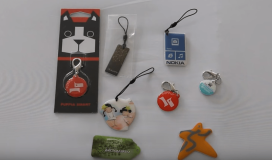HOW IS IT DONE?
RFID File Folder Infographic - atlasRFIDstoreManaging thousands of files with RFID can be a simple process, but it can quickly become complex depending on what your company needs/wants out of its file tracking system.
Most companies start with tracking files in a single room or cabinet, which is the least costly type of tracking system (small area tracking). To start you need an RFID handheld reader, RFID labels, and some type of RFID file management software. Each file should be given an
RFID tag encoded with a unique EPC number from the manufacturer, or if you would like a custom number, you can encode the label yourself with the appropriate ID. Each tag will typically be encoded with 24 hexadecimal characters (not necessarily hexadecimal format), so if you want the tag to have an encoded number of 1, the corresponding EPC number would be 000000000000000000000001 (23 zeros precede the number 1). The unique EPC number can be saved into the database and associated with the file. In the image below, you’ll find an example of a simple way to associate EPC numbers with their corresponding files using an Excel spreadsheet.
File Tracking- Excel
Next, open the tag finder program on your handheld reader; this program functions similarly to a Geiger counter and can help locate a specific RFID tag. Input the unique EPC number you wish to find and hold down the trigger until you hear beeping. As you move toward the file and the signal is stronger, the frequency of the beeping should increase.
WHO USES IT?
Filing CabinetCompanies both small and large that handle large amounts of paperwork (of files) understand the amount of time and money invested in locating and managing important assets. No matter the size, losing important files can be a significant problem. RFID file management systems are a great option to help companies track files more effectively and efficiently than the typical filing systems used today.
WHAT COSTS ARE ASSOCIATED?
The costs to set up an RFID file tracking system range from the low thousands of dollars (a simple system including a few thousand RFID label tags) to $20, 000+ (a more complex RFID management solution). The setup costs may be high, but the recurring costs can be as little as $0. 12 per tag (unless you expand your system and more hardware is needed). Below is a list of common costs associated with RFID file tracking hardware and software.
Money Bag
RFID Tags – between $0. 17 and $1. 00 each
Handheld Readers – between $1700 and $4500+
Fixed Reader Systems – typically $3000+
Desktop Readers – typically $445+
Software – from $0 (Excel file) to several thousand dollars for an ‘off the shelf’ solution
WHY DO I NEED IT?
When companies begin evaluating RFID file management systems, the most frequent and important question to answer is “why allocate more money to something we do now find for ‘free’? ”
Using RFID for file management is one of the best ways to ensure your files can be located easily among a sea of other files. Not only can it reduce employee time (and stress), it can potentially save your company money.


